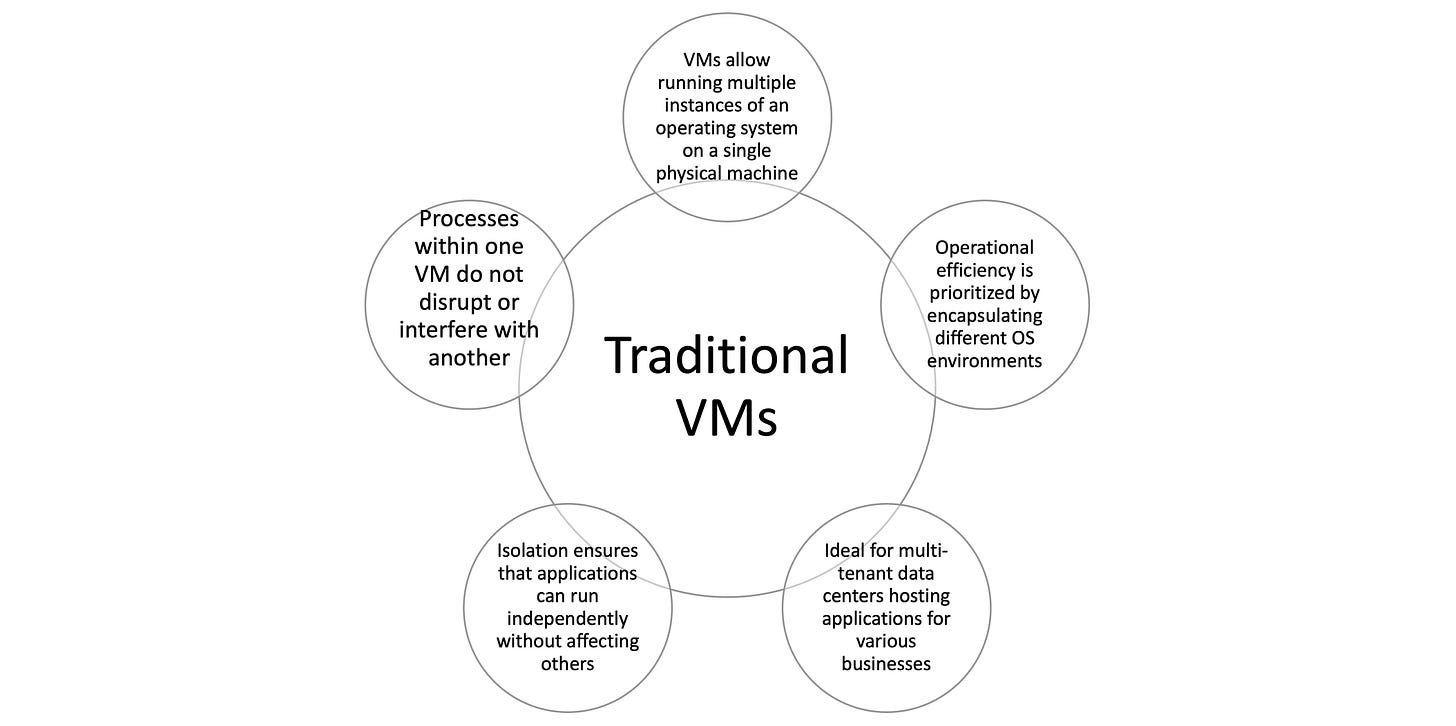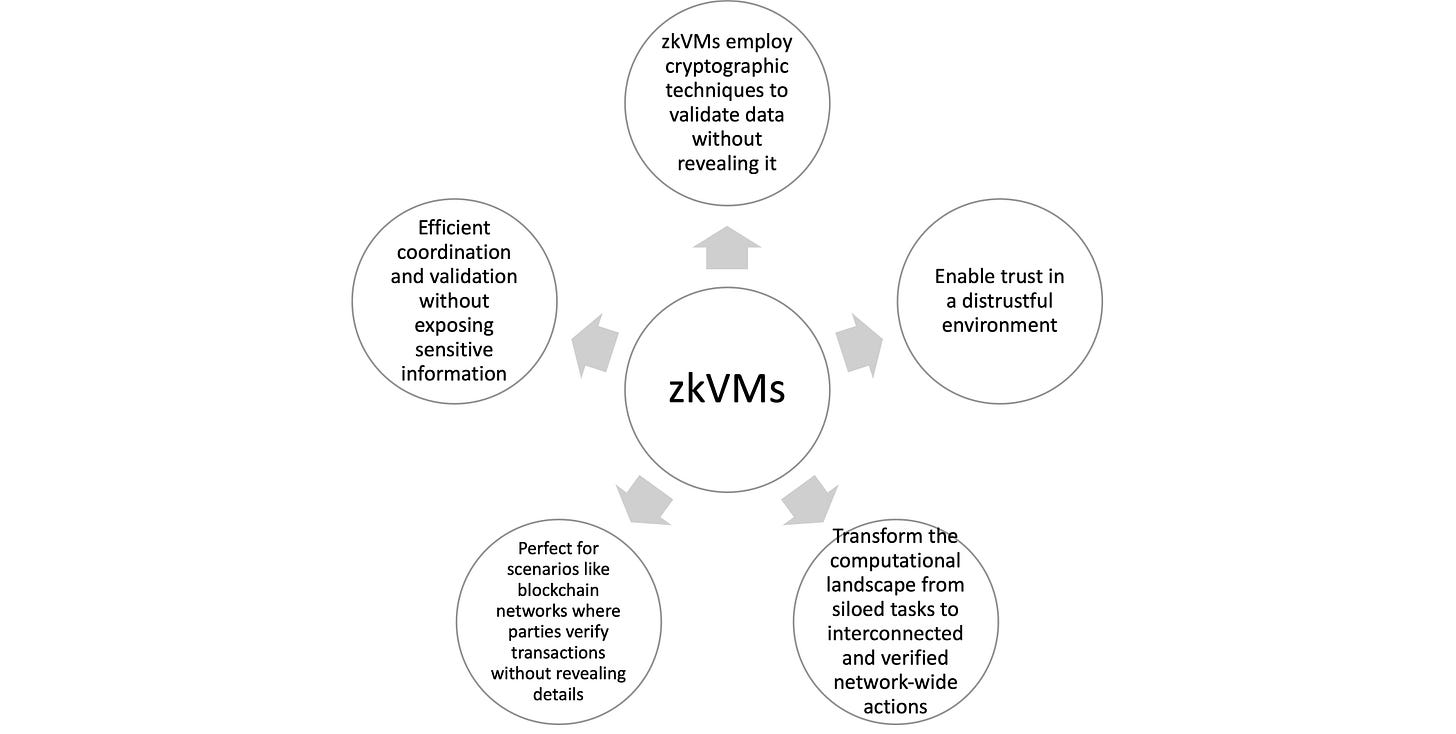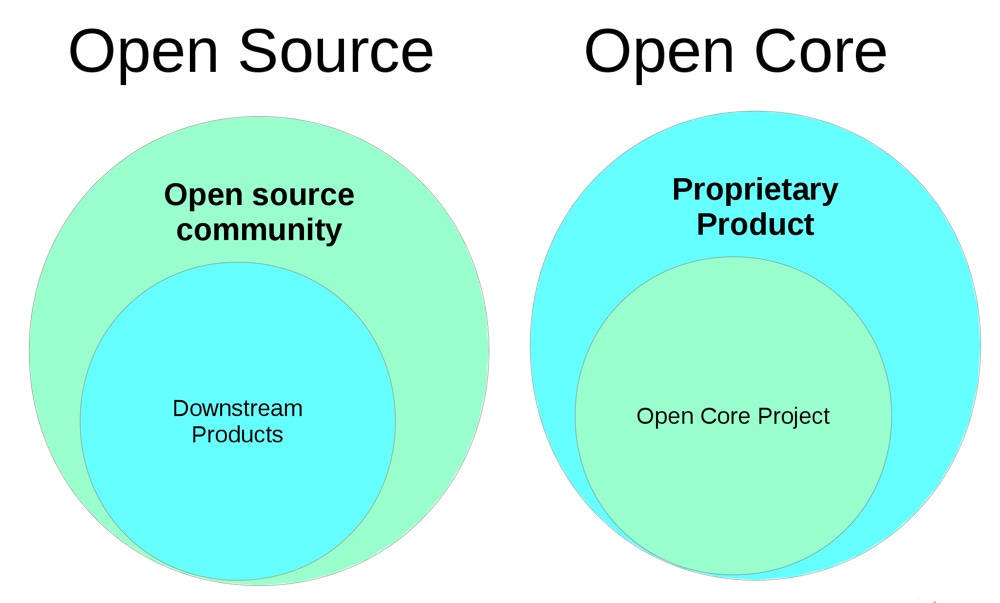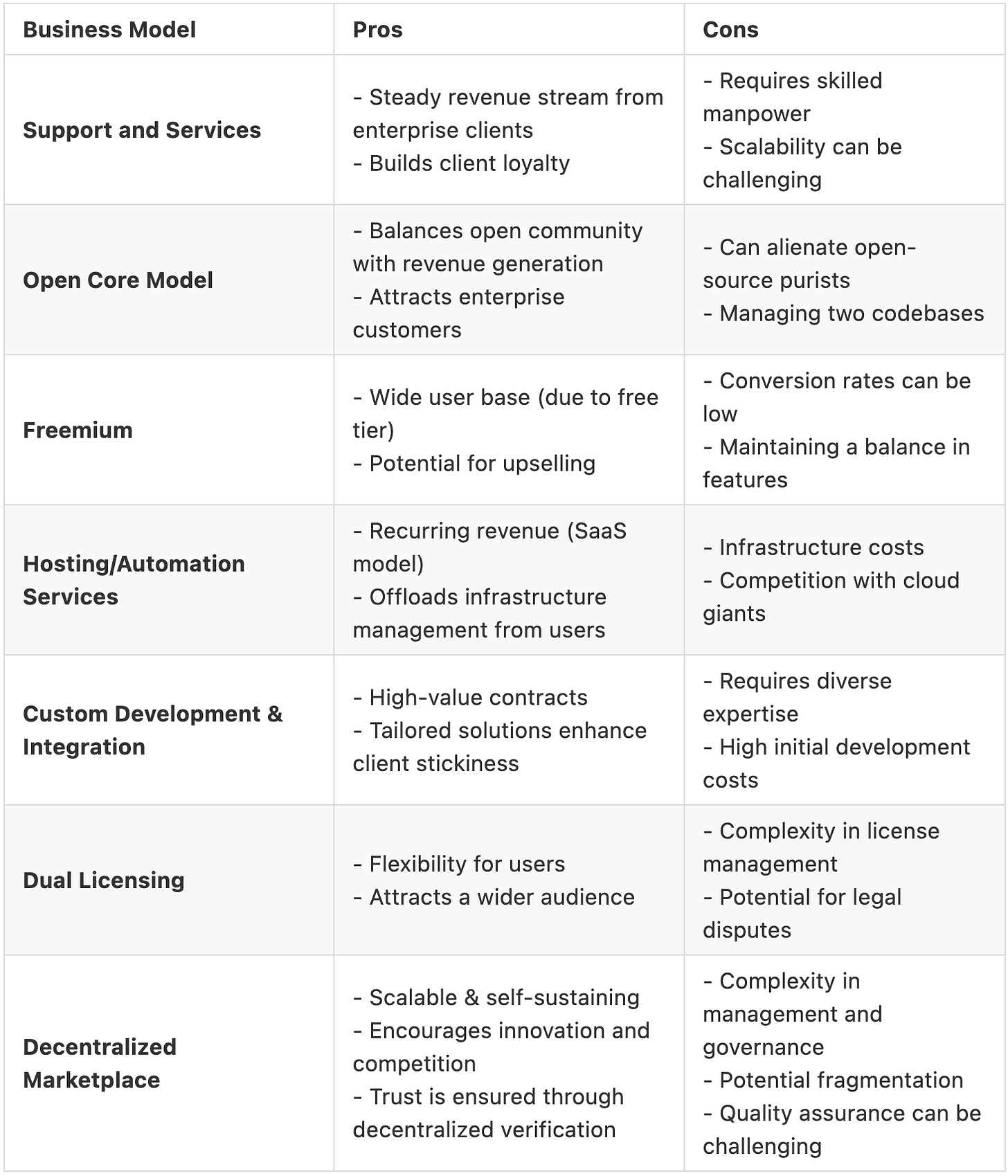The most critical step to accessibility is open source. Here I want to touch on why we advocate for open source zkVMs (see Valida zkVM design and implementation here). We will then discuss how they can serve as a foundation for building such abstraction layers, the role of the community in refining and expanding them, and potential business models that can evolve around this ecosystem.
VMs vs. zkVMs: Contrasting Philosophies
Traditional VMs: Operational Excellence in Isolation
Virtual Machines (VMs) serve as a bedrock of modern infrastructure, enabling developers to run multiple instances of an operating system on a single physical machine. This architecture prioritizes operational efficiency. By encapsulating different OS environments, VMs ensure that processes within one do not disrupt or interfere with another.
For instance, consider a multi-tenant data center that needs to host applications for various businesses. VMs allow each client’s application to run in isolation, ensuring that a spike in traffic or a crash in one does not affect the others. VMs, in this light, act as a series of isolated chambers, each optimized for its tasks.
zkVMs: Coordination and Efficiency in a Networked World
Zero-Knowledge Virtual Machines (zkVMs) pivot from the concept of isolation to that of networked coordination. At their core, zkVMs employ cryptographic techniques to validate data without revealing it. In essence, they enable trust in a distrustful environment.
Picture a blockchain network where multiple parties need to verify the authenticity of a transaction without revealing the transaction’s details. zkVMs shine in such scenarios, allowing for efficient coordination and validation without exposing sensitive information. They transform the computational landscape from individual siloed tasks to interconnected and verified network-wide actions.
Business Models: Why zkVMs Should Deviate from the Traditional
Traditional VMs have often been nestled within proprietary frameworks. Their business models revolve around licensing, support, and updates. Enterprises pay for the rights to use the software, the assurance of updates, and dedicated support.
However, zkVMs, with their foundational principles rooted in decentralization and open validation, stand in stark contrast to this model. Several reasons underscore why zkVMs should not adopt proprietary paradigms:
Trust through Transparency: One of the cornerstones of zkVMs is the trust they engender. Proprietary systems, by design, keep certain elements of their operation hidden. This is antithetical to zkVMs, which rely on open validation and verifiability.
Network Effects and Decentralization: The more entities that validate and use a zkVM, the stronger its trustworthiness becomes. Proprietary systems can often inhibit wide-scale adoption due to licensing restrictions or costs.
Innovation and Collaboration: zkVMs stand at the intersection of cryptography, distributed systems, and computational theory. The pace of innovation is rapid, and open-source collaboration can significantly expedite zkVMs’ evolution.
Given these considerations, zkVMs’ business models might lean more towards open-source development, community-driven enhancements, and possibly monetizing auxiliary services or integrations.
Potential Business Models
Let’s explore some prominent models from the world of traditional open-source software business, and then we’ll delve into how each might provide insights for zkVMs:
Type 1: Support and Services (Red Hat Model):
Traditional Model: Companies like Red Hat provide enterprise support for their Linux distributions, making revenue from the support and consultancy services.
zkVM Implication: As zkVMs become more intricate, enterprises implementing them might seek specialized support. Firms could offer technical support, optimization advice, and integration services to make zkVM implementation smoother.
source: link
Type 2: Open Core Model (GitLab, MongoDB):
Traditional Model: The core software is open source, but advanced features (often tailored for enterprises) are licensed.
zkVM Implication: A basic zkVM could be open source, but additional cryptographic techniques, advanced verification tools, or scalability modules could be licensed to enterprises.
Type 3: Freemium (Evernote, Dropbox):
Traditional Model: Basic features are offered for free, but advanced capabilities or add-ons come at a price.
zkVM Implication: zkVMs might offer basic verification and transaction capabilities for free, but advanced analytics, faster verification techniques, or additional security modules could be premium.
Note that the primary differences between open core and freemium model revolve around how they structure access to product features and the underlying source code.
Type 4: Hosting / Automation Services (Google Kubernetes Engine, Red Hat OpenShift):
Traditional Model: The software (like Kubernetes) is open source, but the company offers hosted versions of the software, effectively selling SaaS based on open source software.
zkVM Implication: Given the complexity that could come with managing zkVM deployments, a managed service around zkVM could be offered. This service would handle the intricacies of deploying, scaling, and ensuring the security of zkVMs while the user can focus on their primary applications. It can also offer integrated tools for monitoring, logging, and automated scaling, optimizing the zkVM operations.
Type 5: Custom Development & Integration (Docker, Canonical):
Traditional Model: Companies offer custom development services or bespoke versions of open-source software tailored to specific industry needs.
zkVM Implication: Enterprises might require zkVMs tailored for specific industries (like finance or healthcare). Businesses could offer custom zkVM development, integrating industry-specific tools and features.
Type 6: Dual Licensing (Qt, MySQL):
Traditional Model: The software is available under both open-source and commercial licenses, giving users a choice based on their needs.
zkVM Implication: zkVM tools could be made available under a GPL-like license for community and open projects, and a commercial license for enterprises seeking proprietary integration.
Type 7: Decentralized Marketplace (Filecoin):
Traditional Model: These platforms create decentralized marketplaces where users can offer or request resources.
zkVM Implication: A decentralized prover marketplace sounds like a utopia for zkVMs, but certain challenges come to the fore:
Proof Size and Parallelization: zkVMs (especially STARK-based) often generate large proofs, and decentralizing the prover services could hinder parallelization, especially when these services sprawl across diverse geographical locations.
Custom Configurations: Certain zkVM use-cases might demand bespoke configurations. For instance, zkEVM could necessitate a specialized acceleration circuit for the keccak256 hash function. Such customizations may not lend themselves seamlessly to a decentralized modus operandi.
Considering these intricacies, there’s a growing sentiment that while decentralization is a noble and desirable end, a centralized model might, in many scenarios, present a more practical, efficient pathway, at least in the foreseeable future.
Here’s a table summarizing and comparing the different business models:
If you’re interested in further discussions on this topic or working together on this subject, please reach out to me at v@delendum.xyz.
Giovanni Battista Piranesi, Appartenenze d’antiche terme, 1750/51









cool stuff! :)